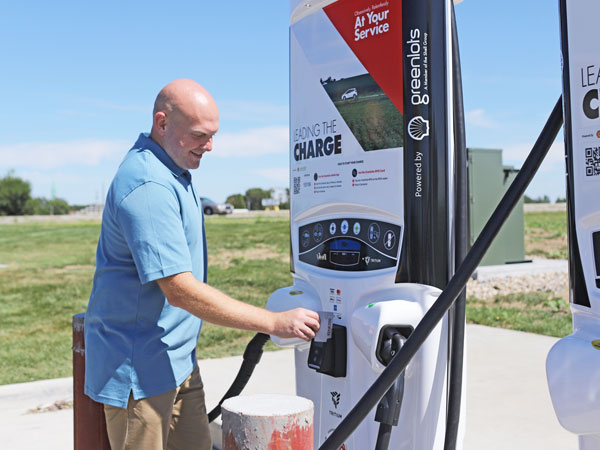As electric vehicles (EVs) take center stage in the global transition to sustainable transportation, the development of fast-charging networks has become a game-changer in 2023. According to a recent report by Bloomberg Green, the number of fast-charging stations worldwide has increased by over 50% in the past year alone, significantly boosting EV adoption rates. In this article, we will explore how these advanced charging networks are transforming the EV landscape, discuss the latest technological innovations, and offer practical advice for prospective EV owners.
The Rise of Fast-Charging Networks
Why Fast-Charging is Essential for EV Adoption
Fast-charging networks are crucial for the widespread adoption of electric vehicles. Unlike traditional charging stations, which can take several hours to fully charge an EV, fast-charging stations can replenish an EV’s battery in under 30 minutes. This drastic reduction in charging time addresses one of the primary concerns of potential EV buyers: range anxiety.
- Range Anxiety: The fear of running out of power before reaching a charging station.
- Convenience: Fast-charging stations are often located at strategic points such as highways, shopping centers, and service areas.
According to a study by InsideEVs, 70% of EV owners cited the availability of fast-charging stations as a key factor influencing their purchase decision.
Technological Advancements in Charging Stations
Development of Ultra-Fast and High-Power Chargers
In 2023, the charging technology landscape is dominated by ultra-fast and high-power chargers, such as those developed by Tesla and Ionity. These chargers, capable of delivering up to 350 kW, can add approximately 200 miles of range in just 15 minutes. This is achieved through advanced battery management systems that optimize charging speeds without compromising battery health.
- Tesla’s V3 Superchargers: Deliver up to 250 kW, significantly reducing charging times.
- Ionity’s Network: Offers 350 kW chargers across Europe, making cross-border travel seamless.
The Role of Battery Technology
The evolution of battery technology has also played a vital role in enabling fast charging. Innovations in solid-state batteries and improved thermal management systems, as reported by MIT Technology Review, have enhanced the efficiency and safety of rapid charging processes.
Expansion of Global Charging Infrastructure
Key Players and Collaborations
The global expansion of fast-charging infrastructure is being driven by key players and strategic collaborations. Companies like Volkswagen, Hyundai, and Rivian are investing heavily in charging networks to support their growing fleet of EVs.
- Volkswagen’s Electrify America: Plans to install over 1,800 fast-charging stations across the U.S. by 2025.
- Hyundai’s Partnership with Ionity: Expanding access to ultra-fast chargers for its European customer base.
- Rivian’s Adventure Network: Focuses on remote and off-road locations, catering to adventure-seeking EV owners.
Government Initiatives and Policies
Governments worldwide are also playing a significant role in the expansion of fast-charging networks. The International Energy Agency (IEA) highlights that policy initiatives, such as subsidies and tax incentives, have accelerated the deployment of charging infrastructure, particularly in regions like Europe and North America.
The Practical Side: How to Make the Most of Fast-Charging Networks
Tips for Efficient Charging
- Plan Your Route: Use apps like PlugShare or ChargePoint to locate fast-charging stations along your journey.
- Understand Your Vehicle’s Capabilities: Different EVs have varying charging speeds; check your vehicle’s manual for optimal charging parameters.
- Avoid Peak Times: Charging during off-peak hours can reduce wait times and potentially lower costs.
Comparing Charging Networks
When choosing an EV, consider the availability and compatibility of charging networks:
- Tesla Supercharger Network: Best for Tesla owners, offering exclusive access and seamless integration.
- ChargePoint and EVgo: Provide a broad network across the U.S., suitable for various EV brands.
- Ionity: Predominantly in Europe, ideal for high-speed travel across countries.
Conclusion: The Future of Fast-Charging Networks
Fast-charging networks are undeniably revolutionizing EV adoption in 2023. By effectively reducing range anxiety and enhancing the convenience of EV ownership, they are paving the way for a cleaner, more sustainable future. As technology continues to advance and infrastructure expands, the barriers to EV adoption will diminish, making electric vehicles a viable option for more people.
Are you ready to make the switch to an electric vehicle? With fast-charging networks growing rapidly, there’s never been a better time to embrace the future of transportation. As we look ahead, the integration of renewable energy sources with charging stations and increased global collaboration will further enhance the EV experience, making sustainable transportation accessible to all.
Join the conversation: What are your thoughts on the impact of fast-charging networks on EV adoption? Share your experiences and predictions in the comments below!

